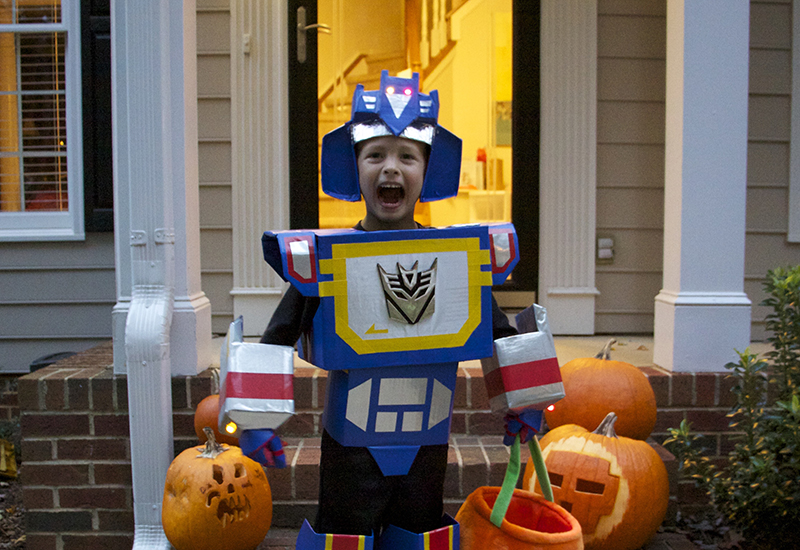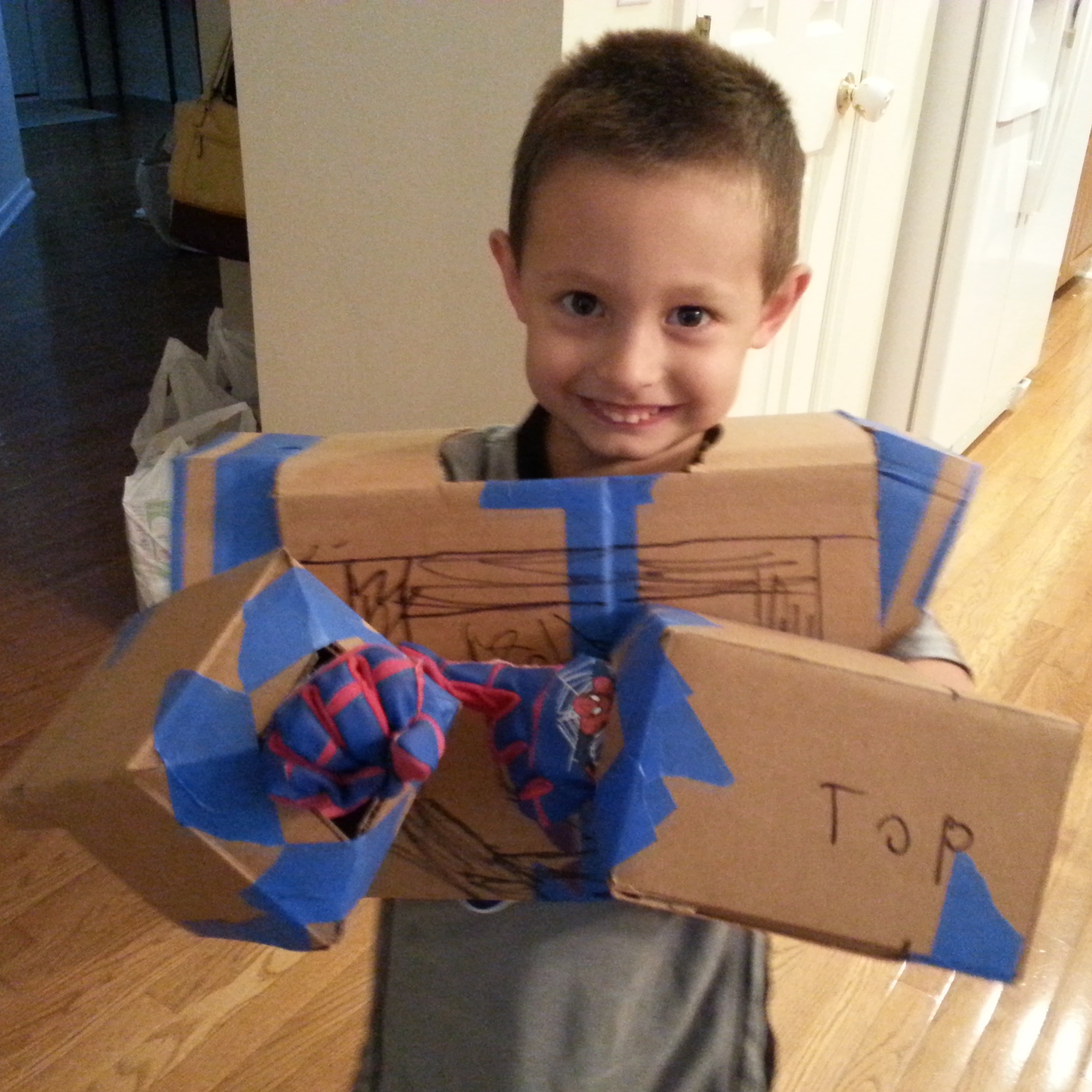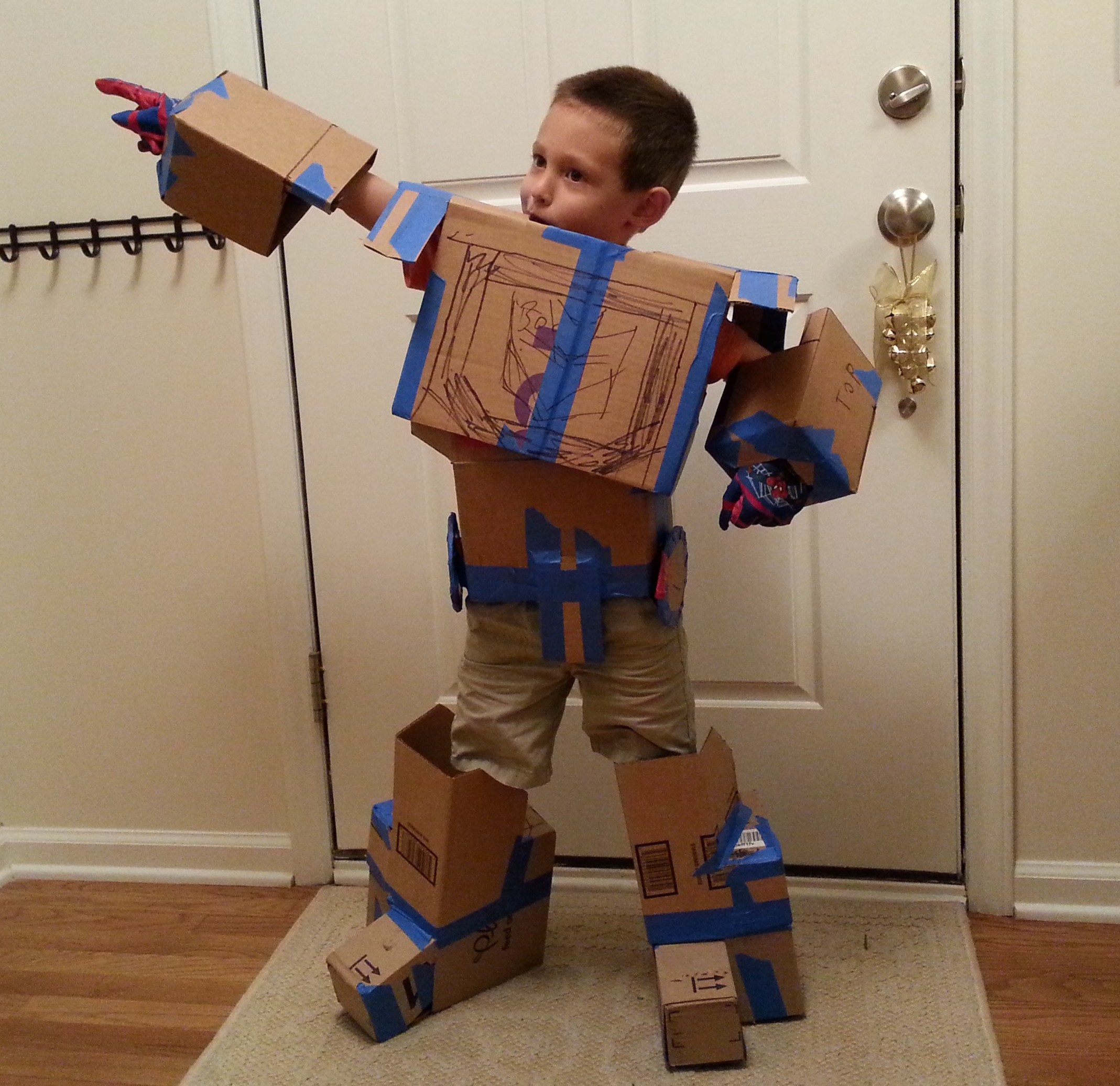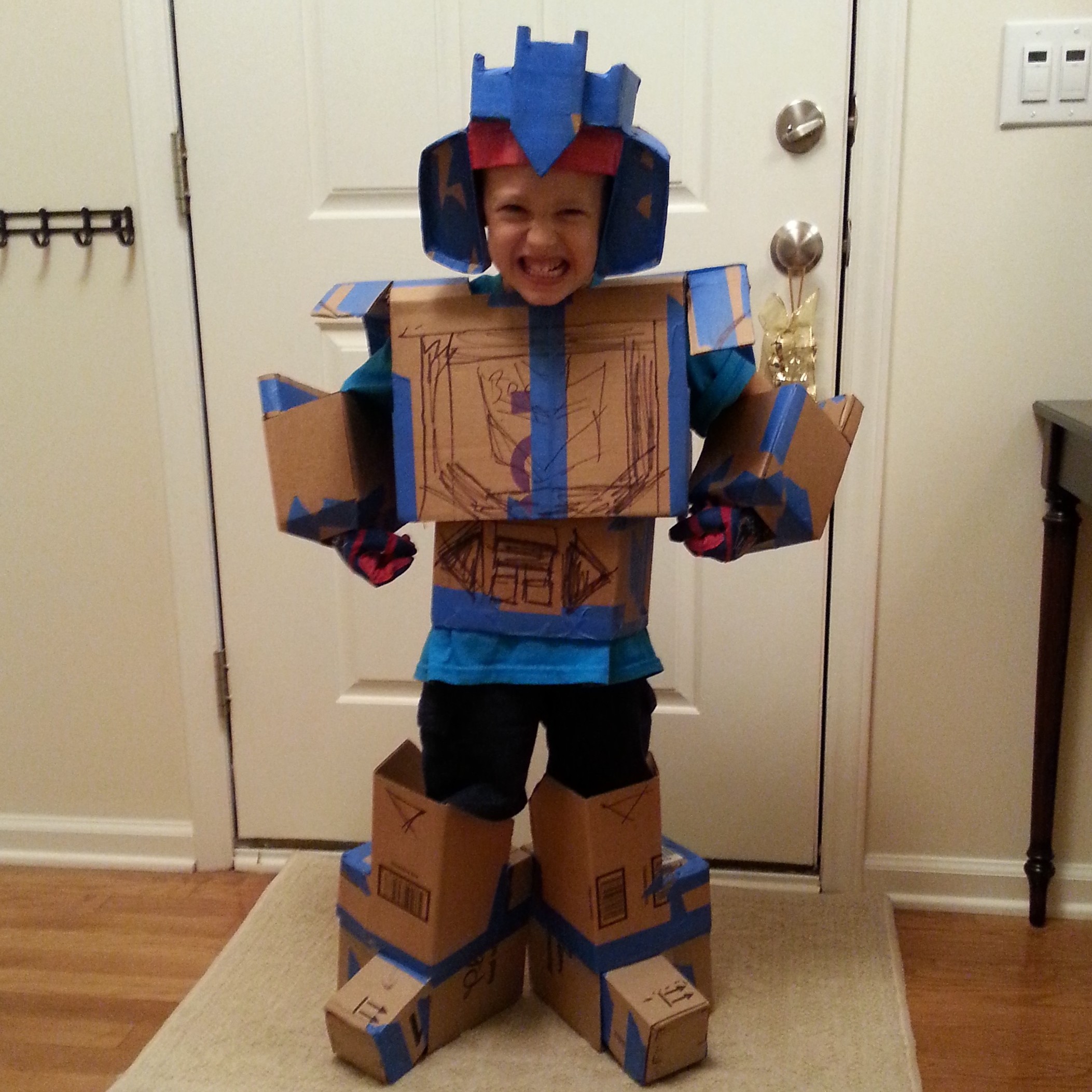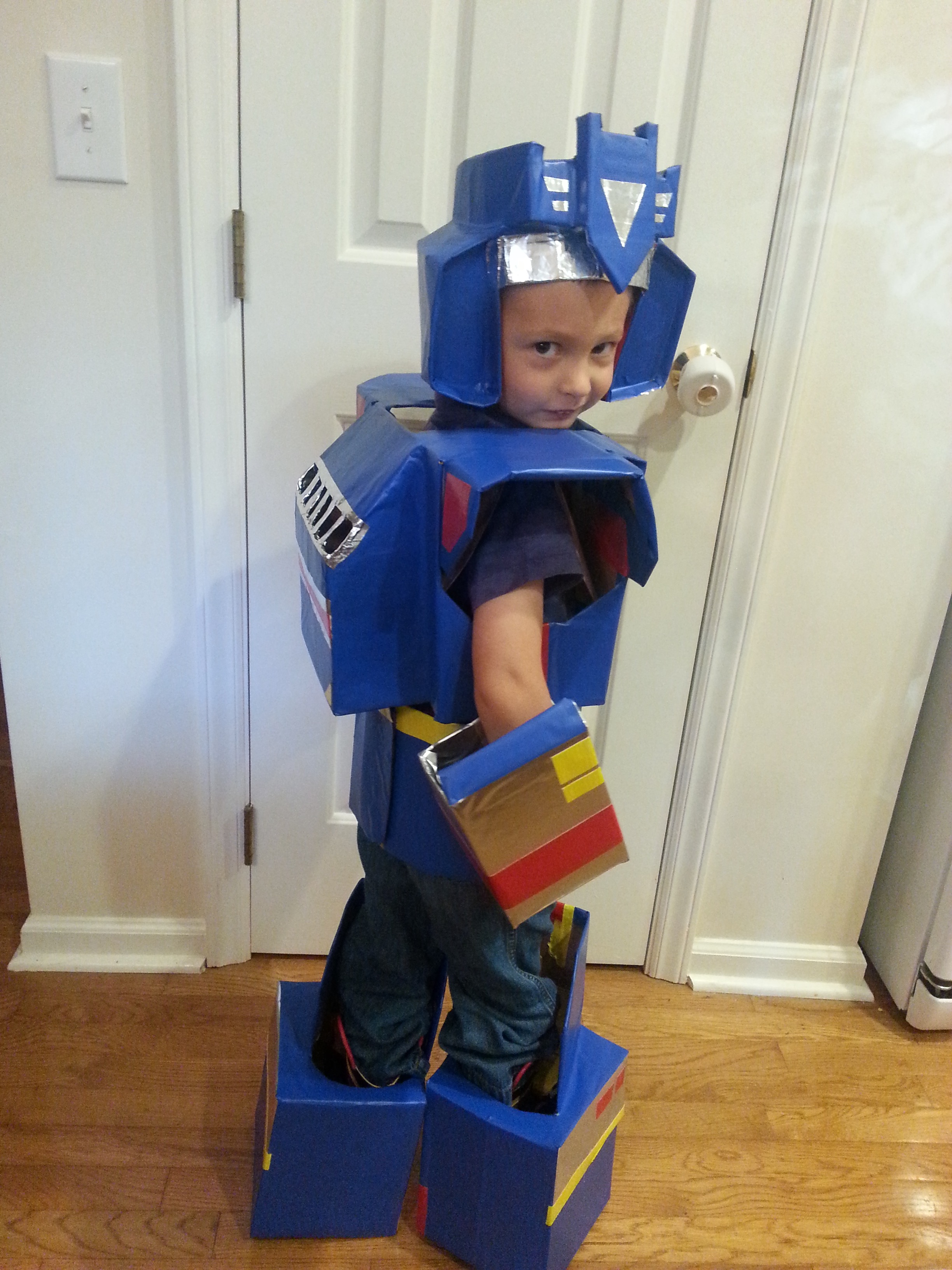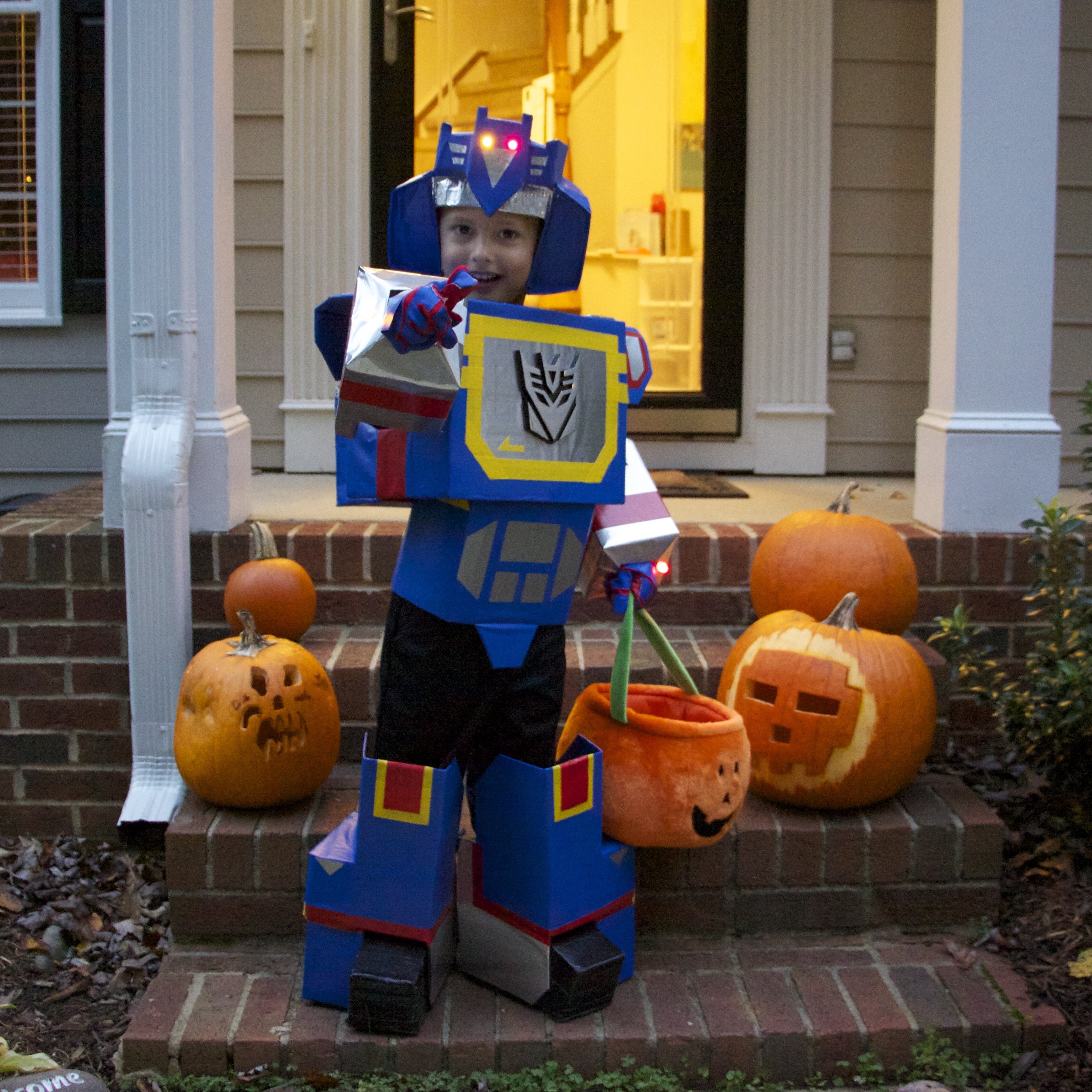After giving Ben a crash course on Transformers: Generation 1, we looked online and found plenty of reference material for the original toy, other people’s costumes, and even 3D models. So I started to gather materials. Being a boxy robot from the ’80s, and not one of the ambling heaps of scrap metal of the more recent Michael Bay incarnation (not that I’m bitter), Soundwave could be composed mainly of cardboard.
For his hands, Ben would wear a pair of padded gloves he already had for riding his bike and scooter. A few other detail pieces, like the Decepticon logo, would have to be purchased online. For the bulk of the costume’s blue, white, and red colors, rather than paint, we used self-adhesive shelf liner. Shelf liner even comes in a metallic faux stainless steel, which served perfectly for some of the more “robotic” details. Of course, no project would be complete without duct tape, which also comes in a variety of colors.
We started with a pretty basic shape for the chest and shoulders that I cut out freehand, quickly realizing it was much too big. To get a better sense of the scale, I took some photos of Ben with his arms out and used a photo editor to overlay measurements. This made sketching the costume’s pieces much easier, and kept everything to the proper scale.



